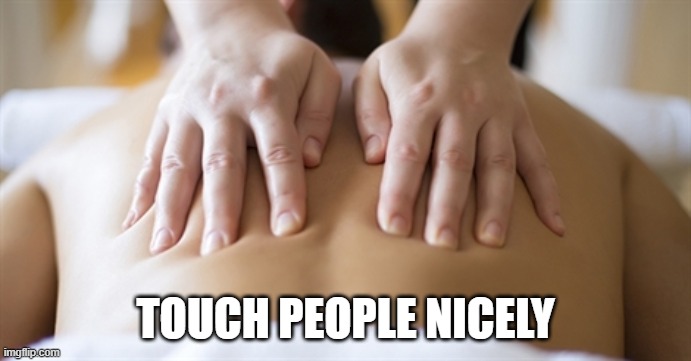
That’s a really good, and common, question which I see being asked a lot.
Let me try and answer that as best as I can.
Monday is the day when I add to my anatomy knowledge. I have a 45/50 minute webinar, which goes into a great deal of depth. Far more than most standard anatomy courses will.
We start each piece of the body at the bony landmarks. Good to know where, and what those are. Then muscles, nerves and blood supply.
It’s both simple and straight forward (bones are mostly obvious), and VERY complex (where nerves originate, where they go, and what they do). Wouldn’t have it any other way if I’m honest.
Today, for example, we were considering the spinal chord as part of the neuroanatomy of the cervical region. Fascinating stuff when you see videos of where a spinal chord is to be found, and all the different component parts surrounding, and coming from it.
And that’s the thing, and how I’m going to answer the question above.
The body is an amazing, complex, fascinating thing. It is clever enough (through the brain), to compensate for things when it has to, to keep us all bowling along.
For example, many, many people have what’s called a ‘functional leg length difference’.
Quite a thing, you might imagine, and you might be right. Or not.
You see, that’s where the body compensates. The difference is likely to be tiny (remember this is not a difference in the length of the bones), and so the body just compensates by adjusting another part (the hips/pelvis) so that you don’t notice.
Sometimes one shoulder might sit a bit higher than the other. Again, the body will compensate.
So what about pain? Well, we know that pain is multi-factorial. In other words, there doesn’t have to be something ‘wrong’ with you, like an injury, for you to have pain.
How then, do we help make that pain less, or go away completely?
A good therapist will clearly ask about past history of injury, but will also ask about sleep patterns, stress, nutrition, family life, work life- all of these can have an impact on what pain you might have.
Why? Simply put, because your brain wants you to know something isn’t right with you, and if you don’t have an actual trauma/injury, pain is the brain’s way of bringing this to your attention. And it’s very good at it.
It’s also very good at hanging on to that pain. And that’s one reason why if you have pain, I can’t ‘fix’ you.
It takes a bit of working together to find out what the underlying reason for your pain is.
And that complex body can get in the way a lot of the time.
A therapist may do some tests that point to a (bio)mechanical issue, like those uneven shoulders, and offers a course of ‘treatment’. That could be movement/exercise, or massage, none of which are guaranteed to work.
They can certainly help temporarily, but unless we get to the root of the problem, the pain will return.
I guess the next question might be ‘so how many treatments do I need?’ Absolutely no idea.
Might be 1, might be several.
I don’t have magic hands, the body (and you as a human being) are complex, and so there is no magic formula and a lot of the time, no obvious answer.
Who decides, then, how we should work together? YOU do.
If by working together, you feel I have helped you and you don’t need to see me any further – perfect.
If you feel it’s helped a bit and you’d like to come back for more, then I’ll be absolutely delighted to help. But you are the decision maker in our therapeutic alliance.
I cannot, and will not, guarantee that I can ‘fix’ you.
I will work with you, using touch, the pressure of which is guided by you.
I’m not for causing more pain to get rid of pain.
Touch People Nicely. I think that is a great way of putting it.
